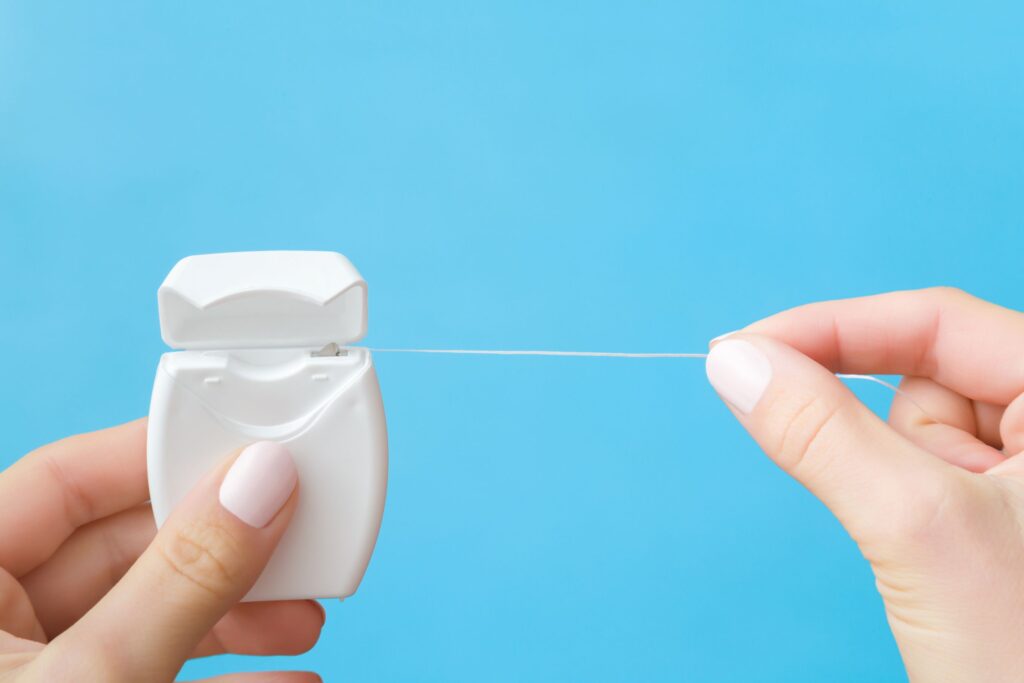
Tooth loss can impact your daily quality of life in several ways. For instance, you might feel self-conscious about the new gap in your grin. You might even struggle to bite and chew your meals, or develop a lisp, slur, or other speech impediment.
Your dentist can provide lifelike dental implants to rebuild your smile, but you must care for your restorations carefully to avoid common oral issues, such as gum disease. Continue reading to learn more about how to floss your new tooth to avoid this potential problem!
What are Dental Implants?
Unlike dentures and dental bridges, implants are surgically placed for added strength and stability. It can take several months to recover after your procedure because your jaw must produce enough new bone growth to fuse with the support rod of your implant in a process called osseointegration.
Once that’s complete, your dentist can provide a dental crown (or other appropriate prosthetic) made from resilient, tooth-colored materials. This piece is carefully customized to resemble your natural enamel as closely as possible before it’s cemented over the support rod embedded in your jawbone. Once it’s in place, you’ll have a beautiful new tooth that looks realistic and functions more naturally than the alternatives.
Can I Develop Gum Disease with Dental Implants?
Your restoration isn’t made of the same organic materials as the teeth you were born with, so you don’t need to worry that they’ll get cavities. Because of this, some patients also assume that they won’t develop gum disease, but that’s not always true.
Would you be surprised to learn that the leading cause of failure is an advanced form of gum disease called peri-implantitis? If bacteria in your mouth penetrate the bone or connective tissues anchoring your new tooth in place, it can become destabilized or completely dislodged. This can be prevented with twice-daily brushing and flossing, but you must exercise the proper technique to avoid harming your prosthetic.
How Should I Floss with Dental Implants?
Your teeth are anchored in place with natural muscles and ligaments that your dental implant doesn’t have. Instead, it has a seal, or a protective soft tissue barrier that forms around it to protect the underlying bone tissue from harm. If this seal is broken, germs from your mouth can infect the implant site, eventually contributing to failure.
That means you must floss carefully to avoid damaging it. To do so, gently press your floss into the pocket of your gum. Wrap it so that it forms a “c” shape around the base of your implant, then gently glide it up and down. If you’re worried this might hurt your new tooth or struggle to manipulate the glossy string, you might do better with an oral irrigator that uses a stream of pressurized water to clean your connective tissues instead.
Using the proper flossing technique can help you protect and preserve your new tooth for years to come!
About the Practice
At Oakbrook Dental & Orthodontics, you and your family benefit from a team of providers eager to help you build and maintain the healthiest, most beautiful versions of your smiles. With general dentists and orthodontists in the office, they can offer a comprehensive menu of services to meet the needs of people of all ages. They have the advanced training and state-of-the-art equipment to place dental implants in the office, and then can provide a lifelike restoration to close the gap in your grin. You can request an appointment on the website or by calling (469) 526-4040.

